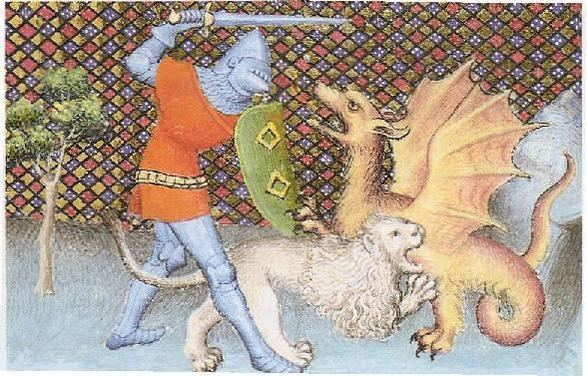 | ||
Similar Das Labyrinth, Der Stein der Weisen, Der Schauspieldirektor, Bastien und Bastienne | ||
The Magic Flute is a celebrated opera composed in 1791 by Wolfgang Amadeus Mozart. Mozart employed a libretto written by his close colleague Emanuel Schikaneder, who was also the director of the Theater auf der Wieden at which the opera premiered in the same year. (He played the role of Papageno as well). Grout and Williams describe the libretto thus:
Contents
Schikaneder, a kind of literary magpie, filched characters, scenes, incidents, and situations from others' plays and novels and with Mozart's assistance organized them into a libretto that ranges all the way from buffoonery to high solemnity, from childish faerie to sublime human aspiration – in short from the circus to the temple, but never neglecting an opportunity for effective theater along the way.
Didactic poetry
Nedbal writes, "Moral maxims appear frequently in eighteenth-century German drama and contemporary German theorists of theater often discuss them in their treatises. The main function of maxims is to draw a generalized observation from the proceedings on stage in order to promote virtue or condemn vice." Cairns attributes a taste for "didactic sentiment" specifically to the Viennese popular theater. Concerning The Magic Flute specifically, Rosen writes that it "develops ... a conception of music as a vehicle for simple moral truths." The opera's didacticism is concentrated in passages of poetry, set in the ensemble scenes, in which the characters cease to converse with each other and join in singing an edifying lesson to the audience.
One example is found in the first act, just after Monostatos and his slaves dance peaceably off the stage, enchanted by Papageno's magic bells and leaving Pamina and Papageno in freedom. The two celebrate their escape by singing the following.
The second act finale begins with a scene framed by didactic poetry. First the Three Boys enter, singing:
The action then shifts to drama and dialogue: the Three Boys find Pamina in despair in the belief that Tamino has abandoned her, and she nearly commits suicide. The Three Boys succeed in dissuading her, explaining that Tamino truly loves her and indeed is willing to risk death for her. Pamina, once convinced, ardently sings "Ich möcht' ihn sehen" ("I want to see him") five times; then after a brief pause the four characters sing:
Rosen suggests that not just the words of these passages, but even the music is didactic: "The morality of Die Zauberflöte is sententious, and the music often assumes a squareness rare in Mozart, along with a narrowness of range and an emphasis on a few notes very close together that beautifully illuminate the middle-class philosophy of the text." As an example Rosen cites the music for the passage beginning "Könnte jeder brave Mann", cited above.
The didactic passages in Schikaneder's libretto attracted the admiration of Franz Liszt, who after attending a performance copied down several of them in a personal letter. Ingmar Bergman in his 1975 film of the opera gave special treatment to the didactic poetry by having his characters hoist "a series of placards on which these moral sentiments are carefully lettered."
The passage quoted above beginning "Zwei Herzen" has attracted particular admiration: Heartz called it "the loveliest of all the opera's beautiful moments"; Abert wrote of "a paradisal radiance unique in this work". Liszt quoted Schikaneder's verse in his letter and appended, "Amen!".
Sexism and misogyny
A matter that perturbs many who encounter the opera is sexism and misogyny, particularly as expressed by the priests of Sarastro's order. (Racism, as expressed in the character of Monostatos, is also a matter of wide concern.)
Many critics have weighed in this question. Branscombe (1991), though deploring these elements in the libretto, might nevertheless be considered to represent something of an apologist view. Hunter (2008:109) offers a middle-of-the-road course, and Brown-Montesano (2007) provides a consistent and forcefully-expressed refutation of the apologists. David Cairns takes yet another view, one that distinguishes Schikaneder's contributions from Mozart's. In Cairns's judgment, Schikaneder himself was an unredeemable sexist, in addition to being (as the historical record indicates; see Emanuel Schikaneder) a womanizer: "Schikaneder appreciated women, no doubt of that, but not exactly in a spirit of emancipation." But Mozart, according to Cairns, consistently worked at improving the libretto in this respect, by omitting the worst of what Schikaneder wrote and more generally by enriching and enobling the character of Pamina. The elevation of Pamina's character indeed matches Mozart's lifelong practice, as Cairns suggests:
How could Mozart have done otherwise? [His portrayal of Pamina] is one more example of the thread that runs through the operas – what Daniel Heartz has called Mozart's "infinite care to create strong and deeply moving female characters in [...] all of his operas."
Authorship
Mainstream scholarship views Schikaneder as the highly probable author. For a marginally-supported alternative candidate, see Karl Ludwig Giesecke.
Assessment
It is not uncommon for critics to describe the libretto of The Magic Flute as being of dreadful quality. Thus Bauman writes, "The libretto has been generally regarded, in Dent's words, as "one of the most absurd specimens of that form of literature [i.e. libretti] in which absurdity is regarded as matter of course." With occasional exceptions, critics voice harsh views on the quality of Schikaneder's German versification as well. Such critics generally do not defend it on its own terms (as if it could stand independently as a work of theater), but rather as a vehicle that served as a great inspiration for Mozart for composition, particularly in its assertion of high ideals and the portrayal of selfless love in the characters of Pamina and Tamino. The harsh assessment is not universal; see for instance the quotation with which this article begins. Johann Wolfgang von Goethe admired the work sufficiently to undertake writing a sequel.
